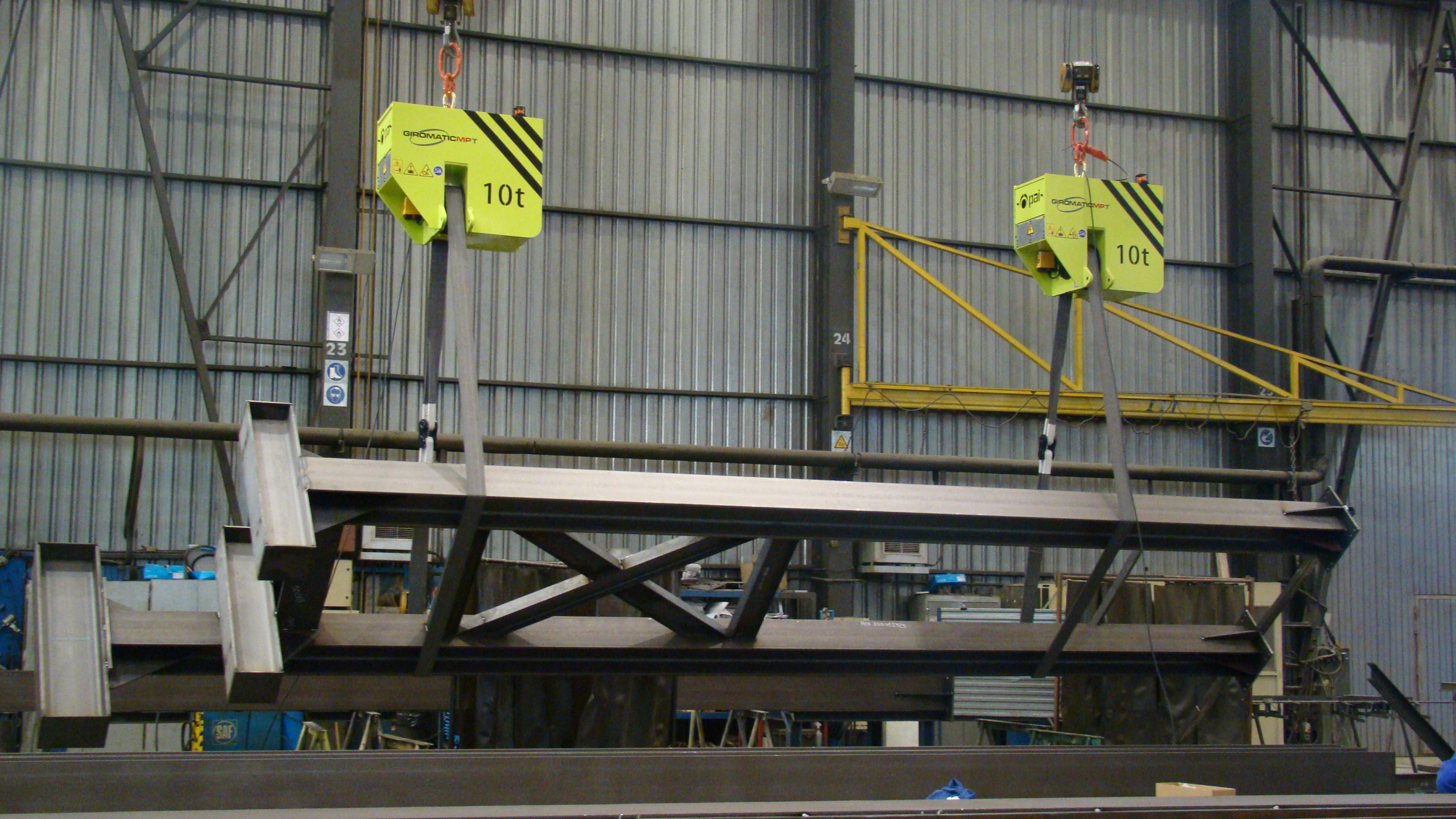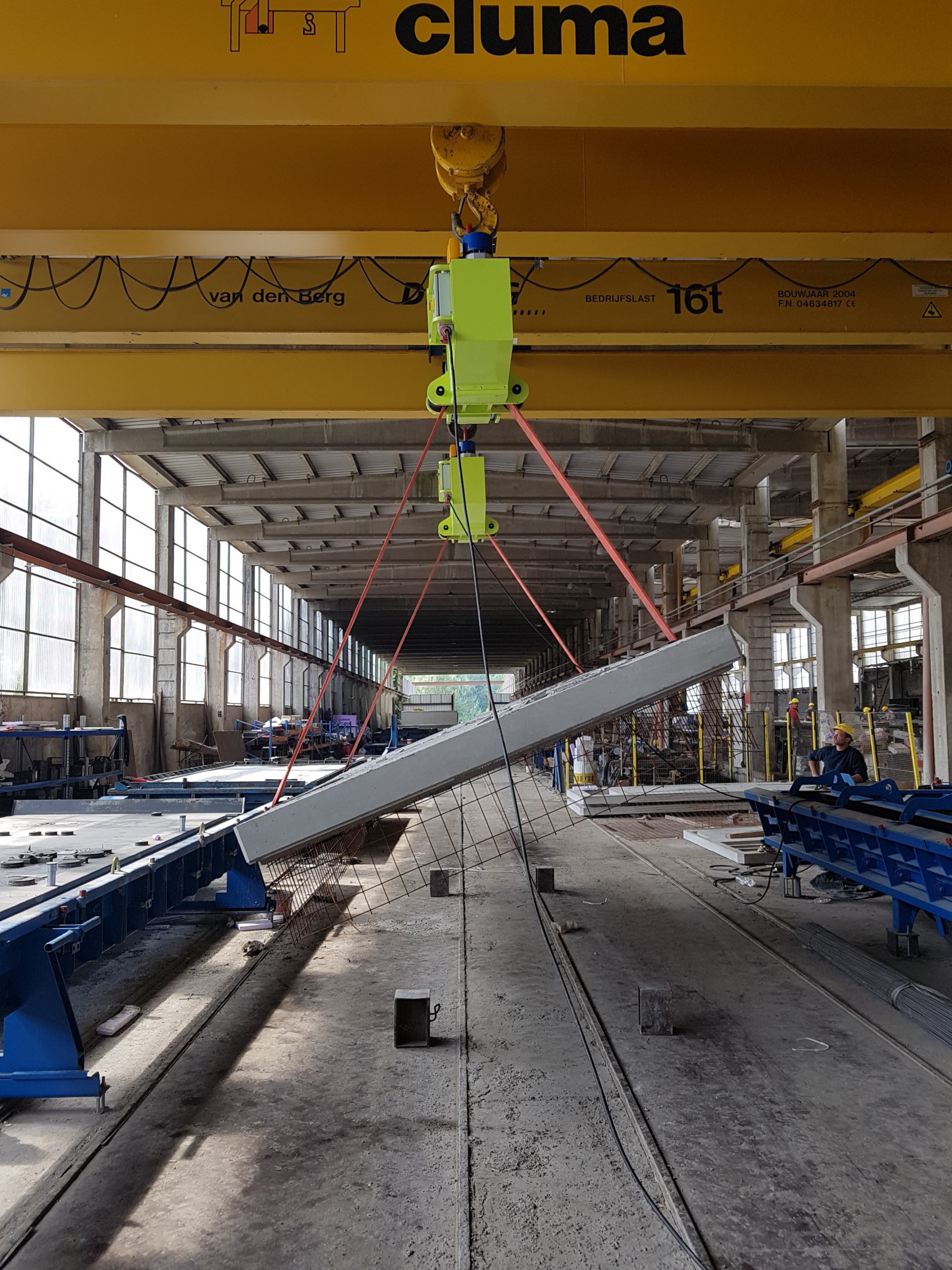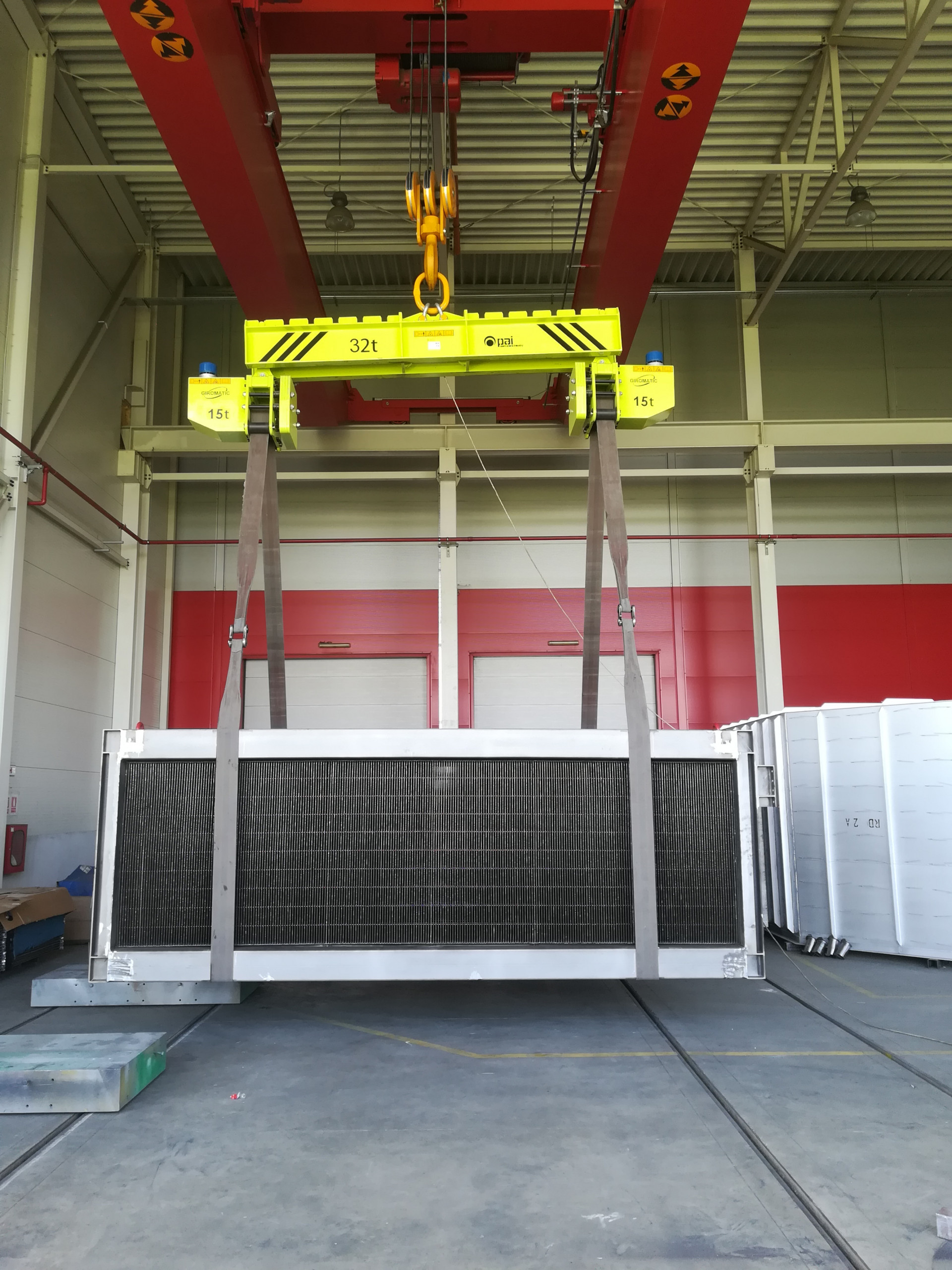
It’s every foreman’s nightmare: when repositioning a bulky component, it tips over and, in the worst case, injures an employee. If unsuitable equipment such as forklifts or cranes are used, this risk should not be underestimated, as the load is rarely evenly distributed in practice. Added to this is the effort required for the turning process, which increases steadily with the size and irregularity of the component and quickly becomes an energy and time waster. The modular Giromatic from Dumeta can provide a remedy.

© Dumeta
“Many companies underestimate how much time handling heavy components actually takes and the risks associated with using unsuitable equipment,” says Dumeta Managing Director Ivo Mulders. “Often, either emergency solutions have to be constructed or heavy equipment has to be procured and set up at great expense of time.” If the production facility only has a forklift truck or an industrial crane, for example, particularly bulky and heavy components cannot be turned at all or only under very unsafe conditions. If they slip off the fork or out of the temporary turning device on the crane, workers can be injured and damage can occur in the hall and to the component.
In addition, the weight of many loads is unevenly distributed due to their dimensions. If the center of gravity is not determined correctly in advance, the component may tip out of the lifting device during the turning process or move in an uncontrolled manner. Even if the lifting is carefully prepared, there is still a residual risk. “It’s easy to avoid these dangers from the outset – and save time in the process – by using professional turning devices,” says Mulders.
Turning device brings unbalanced loads into equilibrium
With the modular Giromatic system from Dumeta, a suitable turning device is used depending on the length and weight of the load. To this end, the company checks the planned location in advance. For example, a model can be selected for operation with two cranes, whereby two motor units can be used instead of one motor unit and one carrier unit, over which the load-bearing slings run. “When handling certain components, two cranes are required simply because of their weight of up to 100 tons and their enormous length of over 60 meters, as otherwise it would be difficult to determine the lifting point and an unstable situation would arise,” explains Mulders.
The individual tensile units or the traverse are attached to the crane hook and the workpiece is placed in the turning loops. This enables easy turning of square parts as well as sharp-edged and eccentric components with high loads within a few minutes. The variant with two driven units is advantageous if more grip is required on each sling or if the load is no longer evenly balanced. In this case, the center of gravity of the component changes unevenly during assembly – for example, when axles are added to a truck chassis. Thanks to the dual control, the same traction can be achieved on both sides and smooth and even turning can be achieved.
Battery version for even more flexibility

© Dumeta
The Giromatic is compatible with all commercially available crane types. “Regardless of the version chosen, the focus is on simple and safe handling,” explains Mulders. “All turning devices can be operated from a safe distance using a radio remote control.”
Once the component is in the slings, which are guided to the load either open or closed, it is lifted and rotated until the correct alignment is achieved. Depending on the crane type, power is supplied via a connection directly on the hook or crane arm. Alternatively, the various Giromatic versions are also available with exchangeable rechargeable batteries, so that the system can be used anywhere without its own power supply. “We developed the battery version last year after our customers increasingly requested such a mobile solution,” adds Mulders. “As each turning process is completed within a few minutes, most companies only need one battery module with a continuous battery life of around 45 minutes for the entire working day.”
Dumeta also advises on the right choice of material and the design of the slings as an open or closed variant. Due to their sharp edges, some components require additional edge protection to prevent damage to the lifting system or the load itself. For these applications, the company offers specially coated slings that are provided with a PE coating and are therefore particularly resistant.
The machine manufacturer always attaches great importance to a close exchange of experience with its customers. “If we know where there is a need and what specific challenges arise in the application, we can realize customer-specific special designs and constantly expand our portfolio. After all, there are enough problems – we take on the challenge and find the solution,” summarizes Mulders.
Web:
www.dumeta.de/
